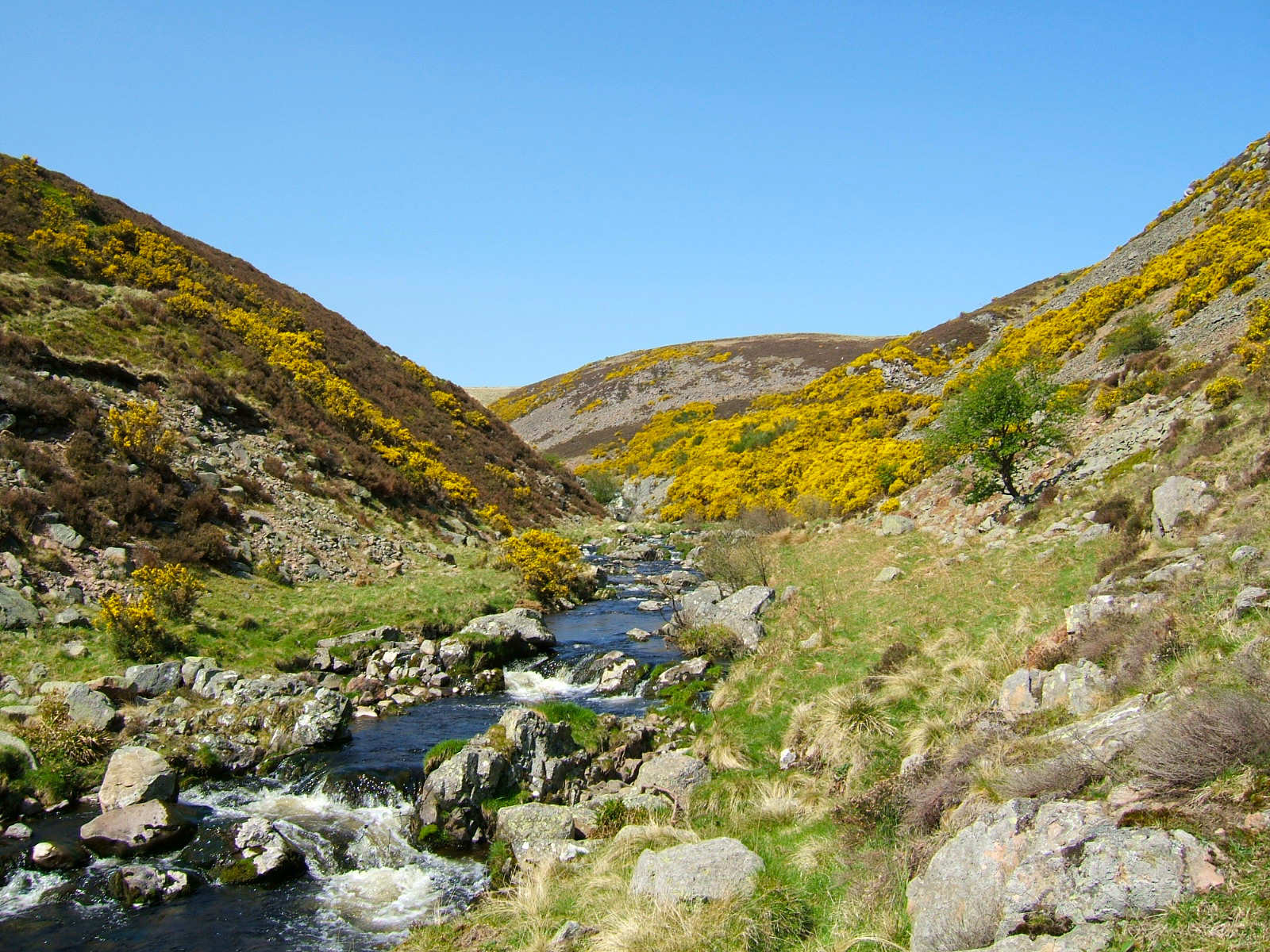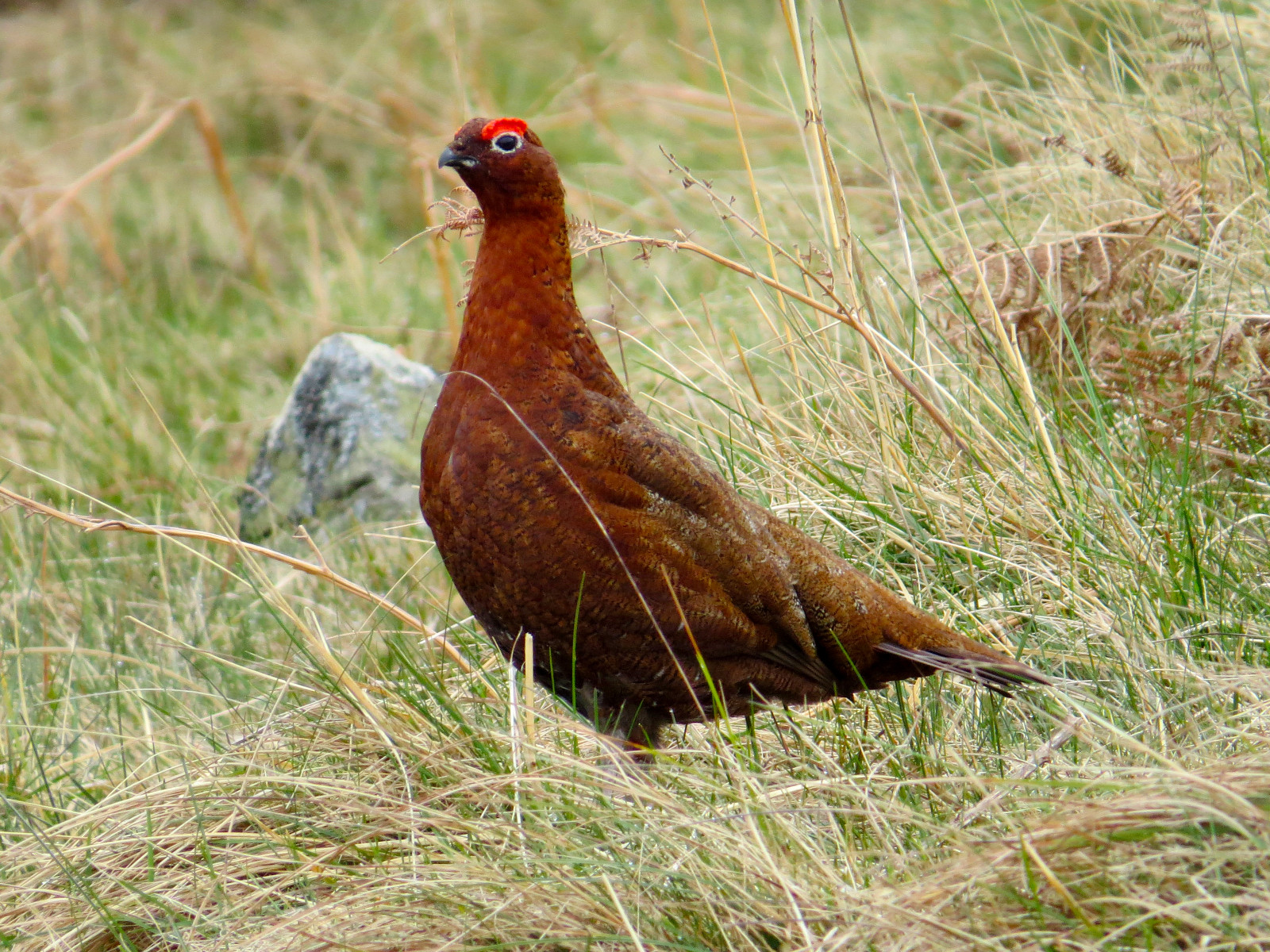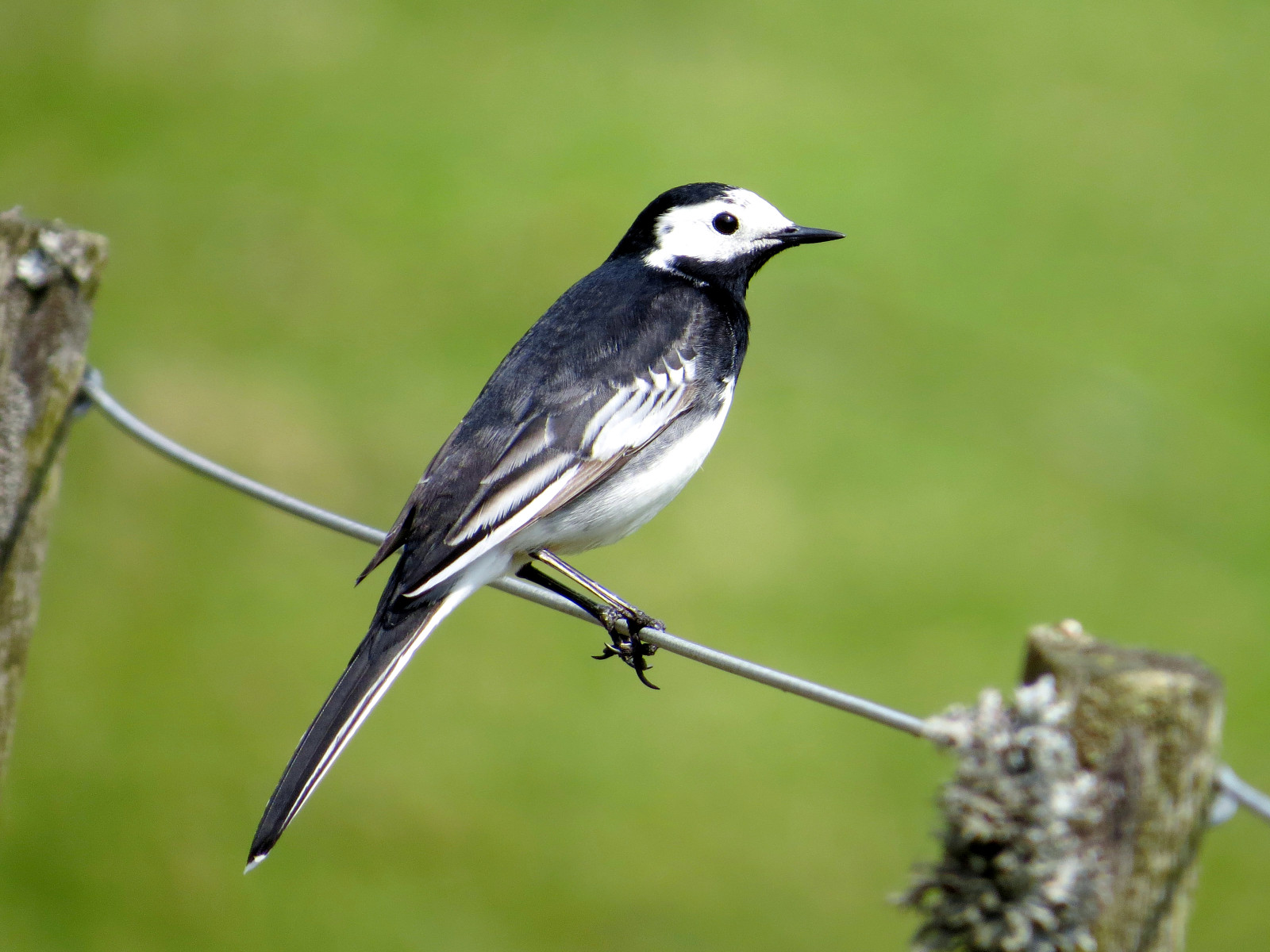Beschreibung
The Harthope is one of Northumberland's best upland valleys, with a mix of semi-natural Alder-Oak-Birch-Hazel woodland, Hawthorn scrub, sheep-grazed grass, and higher up, heather moors and some rocky crags and scree. The highest ground, on The Cheviot (815 m), is topped with blanket Sphagnum bog. If you are very lucky, the strenuous climb to the top may be rewarded with Mornellregenpfeifer on migration in May or September.
In the higher, steeper parts of the valley, Ringdrossel breed, together with Steinschmätzer. Large numbers of Wiesenpieper (the commonest bird here!) and Feldlerche breed on the more open grassy slopes. The heather moors have large populations of Schottischen Moorschneehuhn, sadly now managed for shooting; shooters also release large numbers of Rothuhn and Fasan every year, likely with major detrimental effects on native ground-nesting birds. The lower slopes and woods hold Grünspecht and Kuckuck, and Schwarzkehlchen is a recent colonist with milder winters allowing their survival. Warblers include Fitis, Zilpzalp, Gartengrasmücke, Mönchsgrasmücke and Dorngrasmücke. Few waders are present, but Waldschnepfe are resident in small numbers and Austernfischer and Flußuferläufer breed along the Harthope Burn; there are also good numbers of Wasseramsel and Gebirgsstelze on the burn.
Sadly, the site has not escaped the general declines in so many species; several have disappeared or become very scarce in recent years. Baumpieper, Trauerschnäpper, Sumpfmeise and Waldlaubsänger have all been lost or become hard to find, and even Gartenrotschwanz and Braunkehlchen are much harder to find than just a few years ago. Raptors too have also become less easy to find, with just a few Mäusebussard and the odd Kolkrabe, while Kornweihe and Wanderfalke have largely disappeared, probably due to illegal persecution related to the grouse shooting.
Like most upland sites, the area is bleak in winter, though deep snow seems to be largely a thing of the past. Despite this, good numbers of Rotdrossel and Wacholderdrossel can be found, and the Birch and Alder woods attract Alpenbirkenzeisig and Erlenzeisig additional to the resident breeding numbers.
Details
Zugang
Unfortunately, only accessible by car; no public transport nearby. Steep slopes on the road in make the site difficult for cyclists. Click on a P in the map for directions.
Terrain und Habitat
Wald , Berg , Schlucht/Cliff , Vereinzelte Bäume und Büsche , Grasland, Wiesen , Plateau , Tal , Moor/Heideland , FlussBedingungen
Gebirgig , Flach , Sumpfig , Hügelig , Felsig , Offene LandschaftRundweg
NeinIst ein Spektiv nützlich?
Möglicherweise hilfreichGute Beobachtungszeit
Frühjahr , SommerBeste Beobachtungszeit
FrühjahrRoute
asphaltierte Straße , Normaler Weg , unbefestigte Straße , Schmaler PfadSchwierigkeitsgrad der Tour
Schwierig/anstrengendErreichbarkeit
zu Fuß , AutoBeobachtungshütten oder -türme
NeinZusätzliche Informationen
This is one of the best places in Northumberland to see Adders (Vipera berus), Britain's only venomous snake, though they are not easy to find. Cool but sunny days in spring offer the best chances, when they come out into the open to bask in the sun. For their (and your own!) safety, do not touch them. Other 'non-birds' to look for include Common Toad, Roe Deer and Brown Hare.


